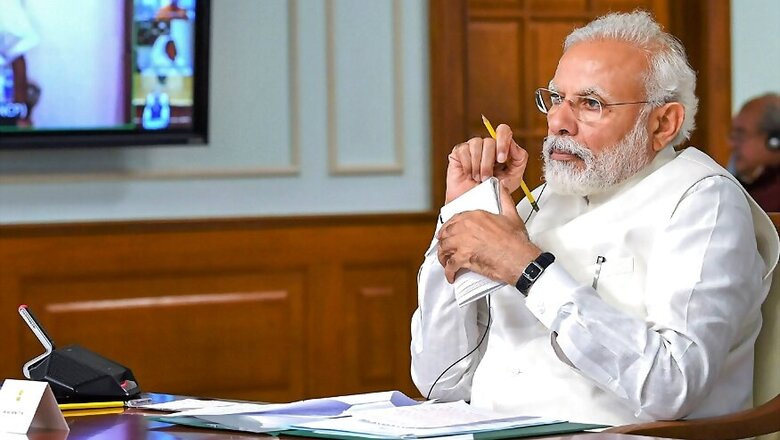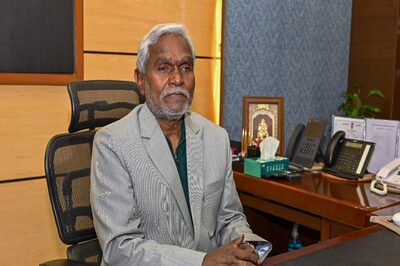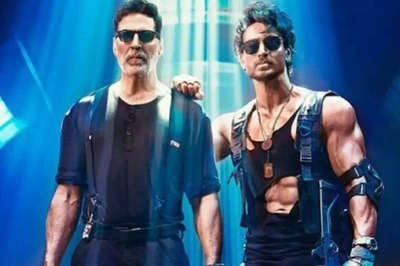
views
“...21st century (belongs to) India…this vision (strengthens)…our resolve of self-reliant India…the meaning of self-reliance has changed…India does not advocate self-centric arrangements…India's progress (is)…integral to (that) of the world….imperative for us to move forward with bold reforms to create a self-reliant India…(to handle) tough competition in the global supply chain…(the economic package) will increase the efficiency of all sectors… (we need to) play a big role in the global supply chain” stated (excerpted) Prime Minister Narendra Modi in his address on May 12. A self-reliant India will "integrate not isolate", reiterated the finance minister on May 13.
Is this the long awaited, take-off moment for the Indian economy? Has the PM divined the magical balance between social justice and unshackling the entrepreneurial genius of aspirational India? Prima facie the emphasis on self-reliance and quest for becoming a part of the regional/global supply chain are as compatible as fire and water. But not so in PM Modi’s scheme of things.
He is acutely conscious that for historical reasons, India has developed a protectionist bent of mind. Even the big industrialists prefer a regulated environment while postulating otherwise. The huge domestic market has dulled their appetite to scout for export destinations.
The government is as alive to the imperative of sweeping industrial reforms and establishment of large enterprises, to harness the benefits of technology and economies of scale. Yet there is also wariness about giving a handle to the opposition parties and critics, to dub it as pro-rich. Therefore, the finance minister was at pains to underline the robust steps already taken, to expand the social safety net. Furthermore, measures to boost the MSME sector have been front-loaded, in the Rs 20 lakh crore stimulus package that is being progressively unfolded.
Our handicap of missing the industrial revolution, has been compounded by the nation’s inability to purposefully expand her manufacturing base. Guided by Mahatma Gandhi and Pandit Jawaharlal Nehru, India rightly emphasised the development of the labour-intensive MSME sector. In the process she also inculcated a suspicion of big industry and willy-nilly ended up creating a rent-seeking licence raj. Over the decades, the vice-like grip of this nouveau raj has been weakened but not eliminated.
A lumbering elephant, India bestirs itself in times of crisis. There was a time when India led a ‘ship to mouth existence’, coping with famines and critically dependent on wheat supplies from the United States. Next, thanks to Dr MS Swaminathan, India successfully ushered in the famed Green Revolution in the 1960s, producing more than enough food for her needs as also for exports.
In 1991, our foreign exchange (FE) reserves plummeted to $2 billion, forcing us to pawn gold. Waking up from a long slumber, India introduced the first wave of economic reforms under the stewardship of PM Narasimha Rao. Today our FE reserves are over $470 billion.
During the last six years of NDA rule, India has been enormously successful in improving her global ranking in the ‘ease of doing business’ index from 142 in 2015 to 63 in 2019. India received a record FDI of USD 64.37 billion in 2018-19. All the same, land, labour, liquidity, legal, infrastructure and taxation bottlenecks do remain. Secondly, notwithstanding the attraction of the large Indian market, the reality is that we still have to compete with 62 other countries to attract the investment dollar.
It is true that investors from many countries including Japan, South Korea and USA are exploring possibilities of moving investments to India. However, they are also evaluating other destinations. According to a Nomura Securities report (October 2019) – out of 56 companies that moved production out of China between April 2018 and August 2019, only 3 relocated to India. The lion’s share went to Vietnam (26), Taiwan (11) and Thailand (8).
Hitherto, why did investors gravitate to China? It was because of the conducive ecosystem that was put in place. Chinese provinces and cities compete with each other to attract FDI. They chase the investors, throwing in sweeteners to clinch the deal and extending wholesome assistance to fast-track clearances. Indian leaders and bureaucrats have little choice but to change their mindset to become more a facilitator and less a regulator.
The complete picture will emerge once all tranches of the reforms package are made public. One reason for the staggered approach could be that the government wants to keep a finger on the public pulse and if necessary, tweak some of the measures appropriately. All the same, for the reforms to be meaningful, the government must (and is likely to) go the whole hog. Mere tinkering at the edges will not suffice.
Given the current politico-economic dynamics, there is bound to be a divide between the industry and the right-of-centre economists/media that will welcome the reforms and the opposition parties, as well as critics, who would oppose them. It is disappointing that even in these times of crisis our polity remains fragmented. That said, the political leadership appears determined to convert the crisis into an opportunity and propel India on the path of rapid economic development.
(The author is a former diplomat. Views expressed are personal)



















Comments
0 comment